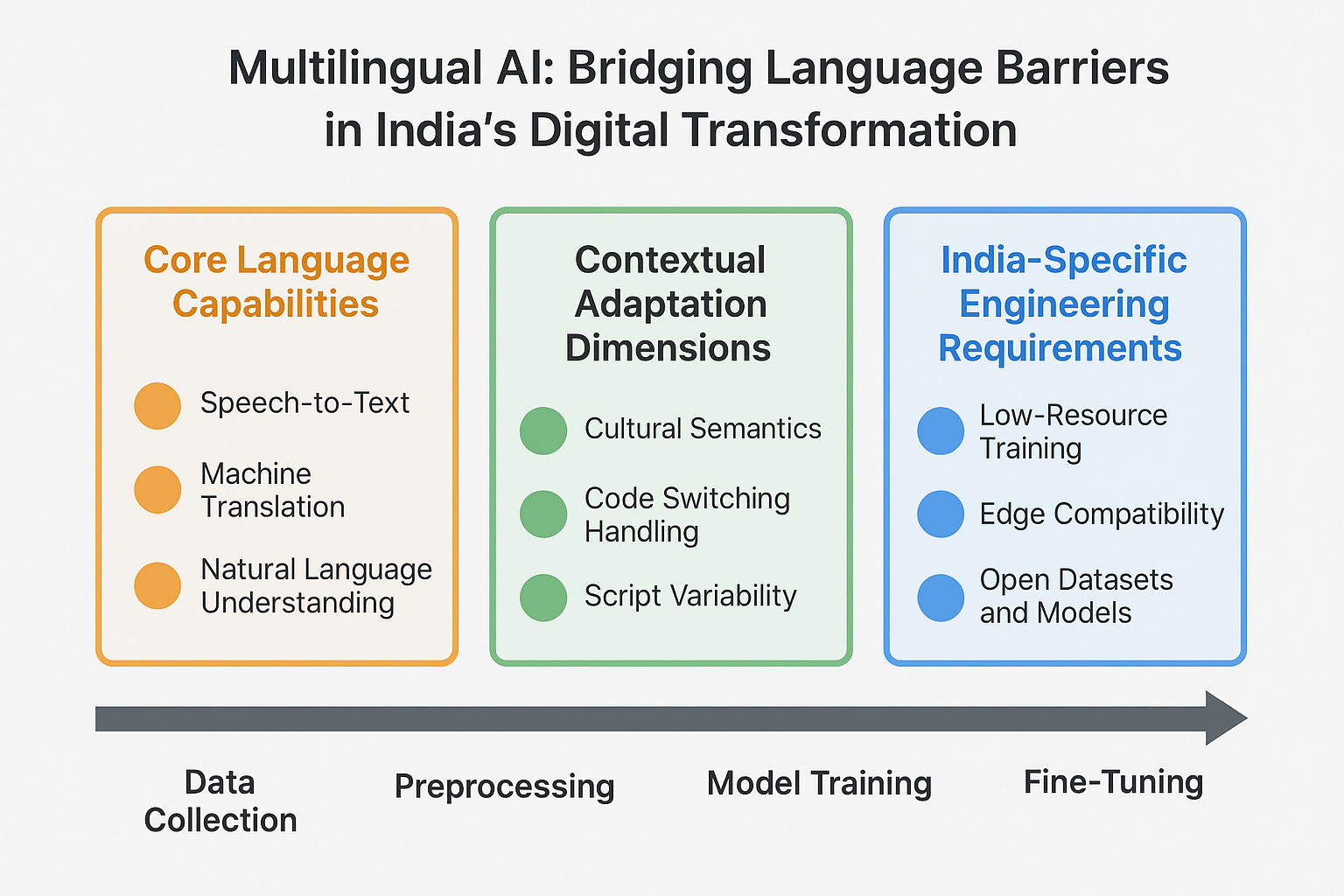The Language Divide in India's Digital Ambition
India is home to 22 officially recognized languages, over 1,600 dialects, and hundreds of millions of non-English speakers. As the nation accelerates its digital and AI transformation, this linguistic diversity presents both a challenge and an opportunity.

Inclusion in digital systems requires more than translation. It demands context-aware, regionally adapted, culturally sensitive AI that speaks with people, not just at them. The lack of robust multilingual AI infrastructure risks excluding vast segments of the population from digital services, e-governance, fintech access, and healthcare.
This blog outlines strategic and technical pathways for building AI systems that work across India's linguistic landscape—delivering real inclusion, improved performance, and national scale.
Framework for Multilingual AI in India
This visual framework consolidates three critical layers:
These components feed into a scalable deployment pipeline:
Data Collection → Preprocessing → Model Training → Fine-Tuning → Real-World Testing
Key Technical Approaches
Applied Case Studies
Technical Challenges & Mitigation
| Challenge | Impact | Mitigation |
|---|---|---|
| Dialect Variation | Confused intent recognition | Phoneme sub-models + local fine-tuning |
| Script Ambiguity | OCR/ASR errors | Script-aware tokenization |
| Data Scarcity | Inconsistent output | Cross-lingual augmentation + synthetic data |
| Code Mixing | Misinterpreted meaning | Dual encoders and domain-specific tokens |
Execution Strategy
Our multilingual AI deployment strategy follows a phased 3/6/9-month maturity curve—starting with baseline benchmarking, followed by pilot rollouts in high-impact languages, and culminating in full multimodal deployments integrated with regional ecosystems. For partners interested in full details, we offer a roadmap-based engagement model.
Conclusion: India's Digital Growth Depends on Multilingual AI
Language is infrastructure. Without inclusive language intelligence, India's digital transformation will remain fundamentally incomplete.
AI must become not only smarter, but closer to the people—in their words, their tone, their tongue.
Multilingual AI isn't an add-on. It's a national imperative.
Interested in multilingual AI strategy or implementation?
Schedule a consultation with Pragyametrics. Let's build AI that speaks for—and with—India.
Contact Us Now